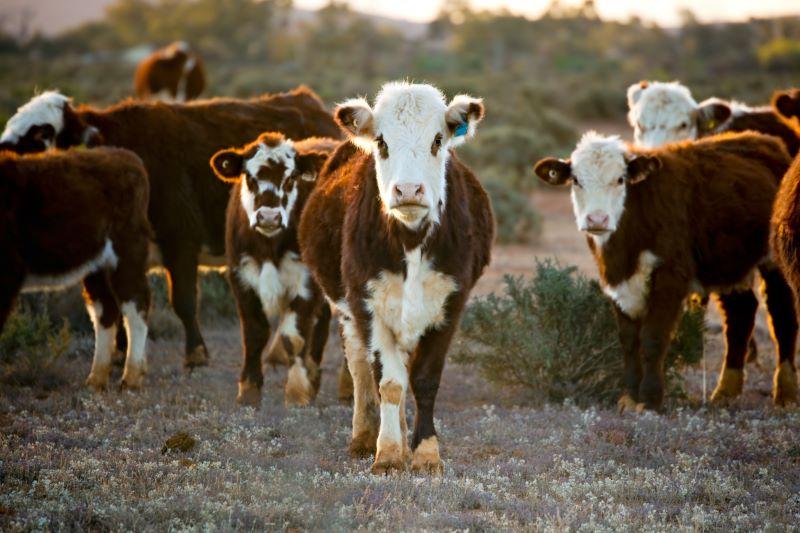Cattle Sales Prices Soften Off Back of Lower Restocker Demand


Public Holidays Forecast To Reduce Cattle Slaughter Volumes In April
The Eastern Young Cattle Indicator (EYCI) softened by 8c at the end of last week, falling to 1,082.37c/kg cwt to reach its lowest level since mid-November last year, according to Meat & Livestock Australia’s (MLA) Weekly Sheep and Cattle Market Wrap published on April 7.
This drop in the indicator is due to reduced re-stocker demand and an increase in feeder buyer activity, the MLA says.
Meanwhile, MLA reports the beginning of this week has seen a slight strengthening of the EYCI to 1,095.56c/kg cwt. Overall, the number of head reporting on the EYCI has increased from last week’s decline, it notes.
Similarly, the MLA says the Western Young Cattle Indicator (WYCI) dropped at the end of last week by 45c but has held steady at 1,127.27c/kg cwt. This is due to the fall in both re-stocker and feeder prices as premiums between the producer and feedlot sector tighten in the saleyards, it says.

MLA notes medium cow prices have softened significantly over the past two weeks, falling by 13 per cent to 338.24c/kg lwt. Feeder steer prices have also softened by 4 per cent, it adds, reaching their lowest price at the end of last week since November last year. Medium steer prices have increased 29c/kg lwt week-on-week with strong demand from feedlot buyers.
Wagga Wagga yardings have increased in anticipation of the coming Easter holidays, MLA says. Feeder steer prices at the saleyards were at a 61c/kg lwt premium on the national average for feeder steers, reflecting the strong demand for feeder cattle in this market and the premium prices being found in the southern region of NSW, according to the MLA.
Cattle slaughter has softened slightly week-on-week, dropping from 98,667 head to 96,851 head, the MLA reports.
Looking Ahead
MLA says smaller national yardings and reduced processing capacity can be expected this month due to the number of public holidays, with slaughter volumes set to drop to rates typical of the April period.
Additionally, it notes that seasonally, lower slaughter rates occur at this time of the year. Given there is three four-day weeks coming up this month due to Good Friday, Easter Monday and ANZAC Day, the impact of the shorter weeks is expected to be more pronounced than in the previous two years, when there have only been two shortened weeks due to Good Friday and Easter Monday, it notes.
“As a result, smaller national yardings and less numbers going through the indicators are expected. The lower throughput of head reported through the indicators, especially the Eastern Young Cattle Indicator (EYCI), can cause pricing volatility. Even though processors rely mainly on over-the-hooks (OTH) orders these days, lower throughput in major sale yards can also create production difficulties for processors,” MLA says.

“The April dip in slaughter has occurred between the 13th and 17th week of the year over the last two years, depending on when Easter has occurred. Last year, the Easter dip resulted in slaughter falling 25 per cent in a week from 96,000 head to 72,000 head – which was the lowest weekly slaughter recorded all year. This year, slaughter is expected to operate at 75 per cent for three weeks – a week longer than in 2020 and 2021.”
While online sales have been increasing steadily over the past few years, reducing the impact of public holidays on virtual yardings, MLA still expects a decline in sales and production in April due to the holidays.
Sales that will not go ahead include:
- Friday, April 15 (Good Friday): Elders Feeder Sale, CTLX Store, Griffith
- Monday, April 18 (Easter Monday): Mortlake, Dubbo, Toowoomba, Forbes (cattle), Pakenham, Wagga Wagga (cattle), Tamworth, Bendigo, Muchea (cattle), Corowa, Ballarat (cattle)
- Monday, April 25 (ANZAC Day): Mortlake, Dubbo, Toowoomba, Forbes (cattle), Pakenham, Wagga Wagga (cattle), Tamworth, Bendigo, Muchea (cattle), Corowa, Ballarat (cattle)
- Monday, May 2 (Labour Day QLD/NT): Toowoomba.
Click on the highlighted link for MLA's more comprehensive analysis of the outlook for the cattle market; and the highlighted link for ABARES' latest forecasts for the cattle market market.







